León, Nicaragua, February 2014
I didn’t ever think that I’ll be interested in politics or I’ll even write about it here. A year ago, shortly before my first trip to South America I’ve read “Latinoamerican Fever”, a book written by Polish author, Artur Domosławski. The book made it clear that a trip to South America without touching politics is almost impossible. The topic is really popular there, especially that the times are not stable, transformations still occur and everything happens in a strong leftist rhythm. In short, the situation in Latin America is hot all the time and the times of stabilisation are far ahead of them. And there are people willing to steal a piece of the cake or even take it all.
Last year in Madrid, shortly before my flight to Buenos Aires I bumped into a manifestation ran by followers of Hugo Chaves, who died the day before. Two days later, in the capital of Argentina I ran into the middle of gigantic march. People carried a lot of red flags with communist symbols and leaders painted on. And it wasn’t all about Hugo Chavez, it took place on the 8th of March, which is Women’s Day and the crowd also consisted of opponents of sexism and fighters for working class rights. Shortly after I left Argentina I went through other countries and saw more demonstrations and walls painted with familiar faces. It seems like in Latin America revolution is in fashion at all times.
During my hitchhiking trip along the legendary Route 40 I met few Argentinian hippies who were travelling across the Patagonia. I recall a particular thing that one of them told me: „United States is our eternal enemy. Not people, but the government.”. In the eyes of twenty-year-old Argentinian, the one who said that, I could see some kind of severe determination. His lush beard and short hair made a stunning combination as well, he looked almost like Fidel Castro.
I started to wonder: „How come we (Polish people) hate Stalin so much, while in Argentina they paint his face on banners?”. So I eventually get interested in politics and the question became also „How come we fought communists along with Uncle Sam, the one that is a nightmare for Argentina?”
„Wait, it’s really important for the whole Latin America” – told me socially committed young Argentinian woman, at the moment we were watching the transmission of public speech of Nicolása Maduro, Chavez successor. I also said that the way he is dressed (sweatshirt made of national colours) didn’t make him too convincing. She responded: „The way he dress is really important for everybody here. People need to know that he is one of them”. So I guess you should take a look at his speech on YouTube and get familiar with him and his unique rhetoric.
Down below you can find few pictures with faces from the title. Not going too much into details I’ll only write about Ernesto Guevara, also called Che Guevara, the most interesting figure here. From one side – the fighter and the icon of pop culture, from the other – and the one that not everybody is familiar with – serial killer. His face sells everything starting from clothes to souvenirs and gifts. He featured in a romantic story „Motorcycle Diaries„, as a hero and the soon-to-be liberator of the poor and weak. In the real world – racist known for being against the free speech. Created the new order in Cuba which makes him responsible for the execution of thousands of people (including women and children) of which he supposedly personally killed a couple of hundreds.
Madrid, March 6th 2013, the day after Hugo Chavez death. Loyal followers keep screaming that the revolution is the only way to make things better. The thing is a little bit outdated now, it failed a couple of times already but it looks like there are still some places where it’s on.
Buenos Aires, Argentina, March 8th 2013. Che as symbol of the fight for the poor and for the right for dignity. So go travel to Cuba and see how dignity gets a whole new meaning there.
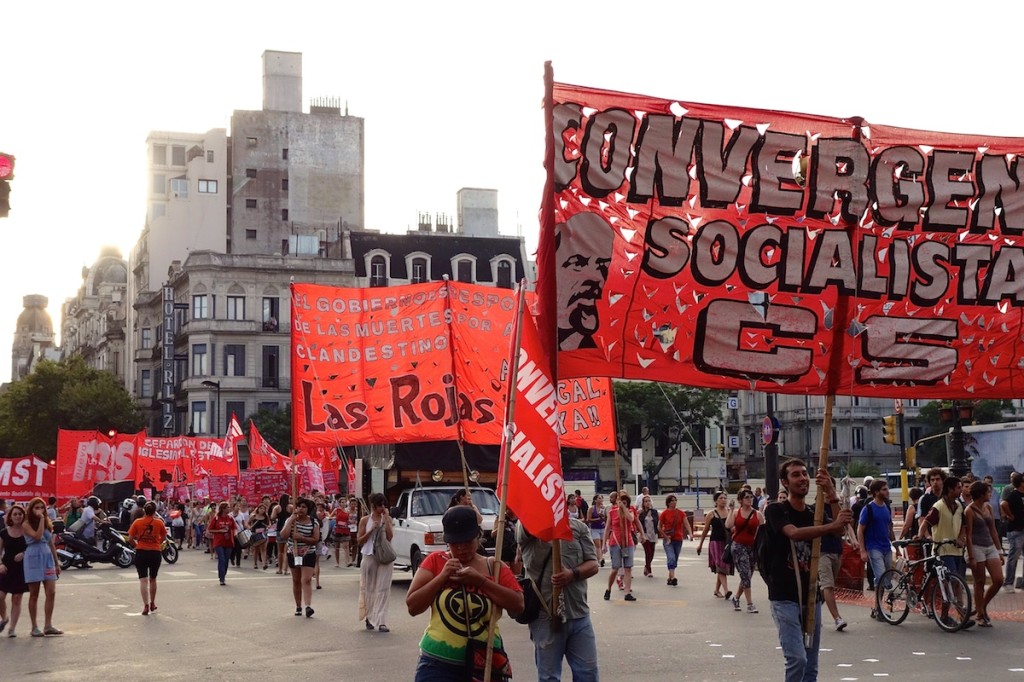
Buenos Aires, Argentina, March 8th 2013. Artur Domosławski writes: „(…) a friend (…) explained me that Argentinians know a lot about Hitler, but nothing about Stalin. Why? Maybe because holocaust survivors came here and told the truth but nobody from Siberia actually could make it.”
Buenos Aires, Argentina, March 8th 2013.
San Salvador, El Salvador, January 2014.
León, Nicaragua, February 2014. Augusto Sandino i Carlos Fonseca were fighting against the influence of the US in Nicaragua. Fonseca also took part in successful revolution in 1979.
León, Nicaragua, February 2014.
Managua, Nicaragua, February 2014.León, Nikaragua, Luty 2014
Nigdy nie sądziłem, że kiedykolwiek zainteresuję się polityką, ani tym bardziej, że będę o niej pisał. Rok temu na krótko przed pierwszym wyjazdem do Ameryki Południowej przeczytałem „Gorączkę Latynoamerykańską” Artura Domosławskiego, która szybko uświadomiła mi, że nie da się pojechać do Ameryki Łacińskiej i nie zetknąć się z polityką. Temat w tamtych rejonach bardzo chwytliwy, zwłaszcza że cały czas trwają różne przemiany, próby sił, a wszystko to w mocno lewicujących rytmach. Krótko mówiąc, w Ameryce Łacińskiej cały czas wrze, do stabilizacji jeszcze daleko, a zawsze znajdzie się ktoś, kto będzie chciał zabrać kawałek, a może nawet przejąć cały tort.
Jeszcze w Madrycie, przed wylotem do Buenos Aires, natknąłem się na demonstrację zwolenników zmarłego chwilę wcześniej Hugo Chaveza. Dwa dni potem, już w stolicy Argentyny „wpdłem” na gigantyczny przemarsz z mnóstwem czerwonych flag, symbolów komunizmu i podobizn wdrożycieli utopijnego systemu. Tym razem niezupełnie chodziło o Hugo Chaveza, bo wydarzenie miało miejsce 8-go marca, a w tłumie znaleźli się m.in. przeciwnicy seksizmu i walczący o prawa robotnicze. Z Argentyny wkrótce wyjechałem, a przemierzając następne kraje napotykałem coraz to nowe demonstracje, a na ścianach miast kolejne murale z wciąż tymi samymi podobiznami. Wygląda na to, że w Ameryce Łacińskiej rewolucja jest cały czas w modzie.
Przemierzając autostopem kultową trasę Ruta 40 poznałem grupkę argentyńskich hippisów, którzy odbywali podróż po Patagonii. W rozmowie padło zdanie, które zapamiętałem szczególnie: „Stany Zjednoczone to nasz odwieczny wróg. Nie ludzie, ale rząd.” Mój rozmówca, dwudziestoletni Argentyńczyk w oczach miał surową determinację, a bujna broda i krótkie włosy sprawiały, że wyglądał jak Fidel Castro. Pewnie z przewieszonym przez ramię pasem amunicji i Kałasznikowem w ręce byłoby mu całkiem do twarzy.
Zacząłem się zastanawiać: „Dlaczego tak jest, że w Polsce Stalina nienawidzimy, a w Argentynie malują go na transparentach?”. Zainteresowanie polityką przyszło samo, a pytać zacząłem jeszcze o to, dlaczego aby wyrwać się z rąk komunizmu Polacy układali się z Wujem Samem, tym samym od którego uciekają kraje takie jak Argentyna.
„Zaczekaj, to jest bardzo ważne dla całej Ameryki Łacińskiej” – usłyszałem kiedyś od zaangażowanej społecznie młodej Argentynki, która całą sobą zapatrzona była w transmitowane w telewizji publiczne przemówienie Nicolása Maduro, następcy Chaveza. Moją krytykę ubioru nowego przywódcy skomentowała tym, że „dla wszystkich tutaj taki wygląd przywódcy jest bardzo ważny. Ludzie chcą wiedzieć, że jest jednym z nich”. Polecam zajrzeć na YouTube i zapoznać się ze wspomnianym materiałem oraz charakterystyczną dla tamtej części świata retoryką.
Poniżej znajdziecie kilka zdjęć z wizerunkami ludzi jak w tytule. Nie wdając się w szczegóły każdego wizerunku napiszę tylko o Argentyńczyku Ernesto Guevarze, zwanym Che Guevarą, który jest jedną z ciekawszych postaci. Z jednej strony wojownik i ikona popkultury, a z drugiej – o czym nie wszyscy wiedzą – bezwzględny współprzywódca rewolucji. Jego wizerunek sprzedaje wszystko, od ubrań po pamiątki i podarunki. W romantycznej opowieści „Dzienniki Motocyklowe” uwieczniony został jako bohater i wyzwoliciel uciśnionych, a w rzeczywistości też brutalny morderca; w ramach zaprowadzenia nowego porządku na Kubie mógłby dziś odpowiadać za egzekucję tysięcy osób (w tym kobiety i dzieci).
Madryt, 6 marzec 2013, tuż po śmierci wenezuelskiego przywódcy. Wierni zwolennicy wykrzykują, że jedynym rozwiązaniem jest rewolucja. Hasło przebrzmiałe i kilkukrotnie obalone, jednak jak widać w niektórych miejscach wciąż modne. Zakorzenia się na podatnym gruncie.
Buenos Aires, Argentyna, 8 marzec 2013. Che jako symbol walki o prawa najsłabszych, prawo do godności. Jedźcie na Kubę i zobaczcie jak godność nabiera nowego wymiaru.

Buenos Aires, Argentyna, 8 marzec 2013. Artur Domosławski pisze: „(…) znajoma, Claudia Stefanetti (…) wyjaśniała mi, że Argentyńczycy wiedzą dużo o zbrodniach Hitlera, a o Stalinie nic. Dlaczego? Może dlatego, że po wojnie przyjeżdżało wielu ocalonych z Zagłady, publikowano ich relacje, a ludzie z Syberii jakoś nigdy tu nie dotarli”.
Buenos Aires, Argentyna, 8 marzec 2013.
San Salwador, Salwador, Styczeń 2014.
León, Nikaragua, Luty 2014. Augusto Sandino i Carlos Fonseca aktywnie sprzeciwiali się wpływom USA w rodzimej Nikaragui. Fonesca wziął również udział w udanej rewolucji w 1979.
León, Nikaragua, Luty 2014.
Managua, Nikaragua, Luty 2014
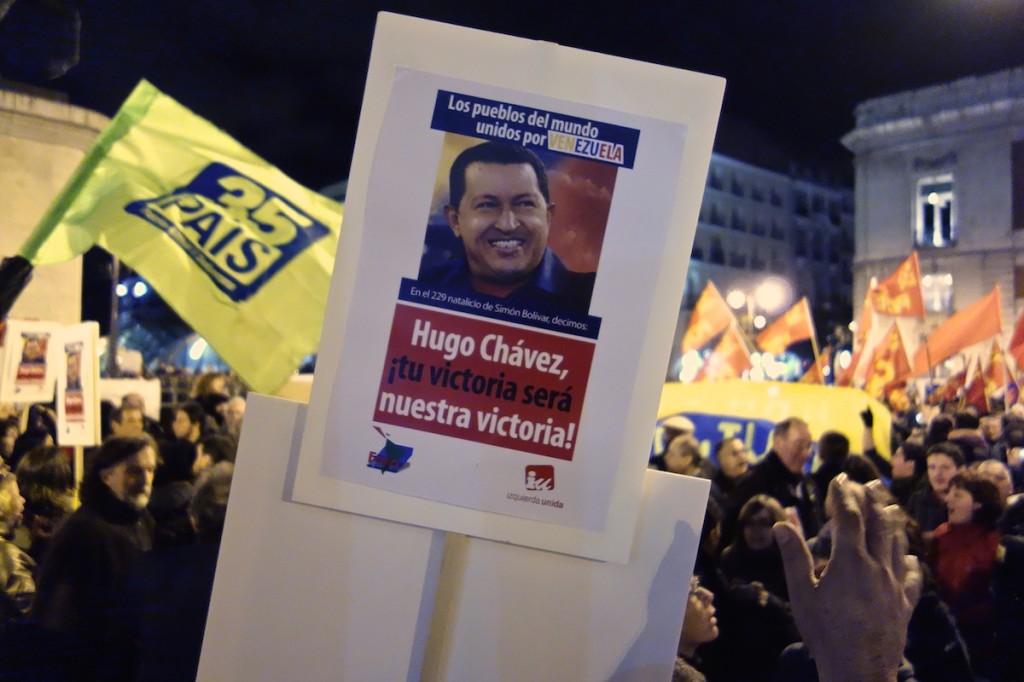
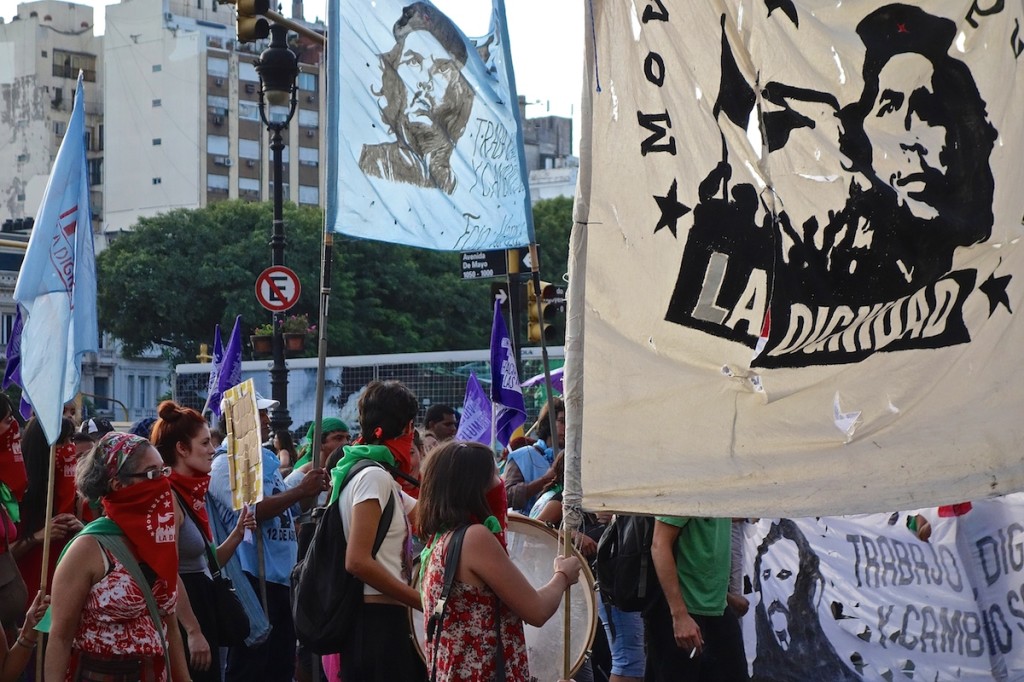

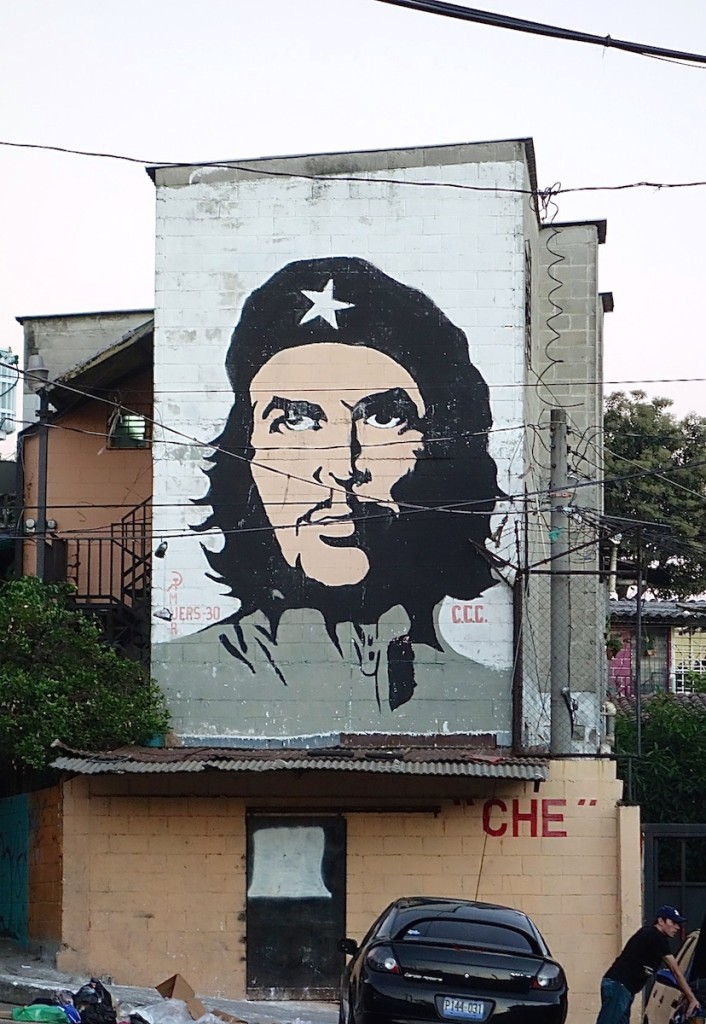
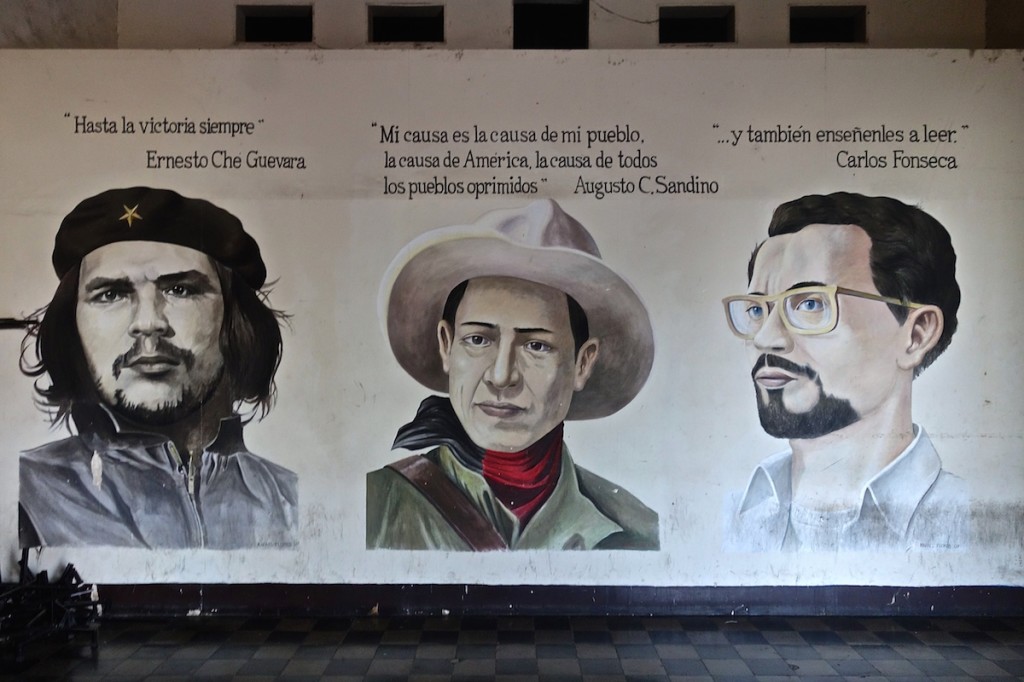
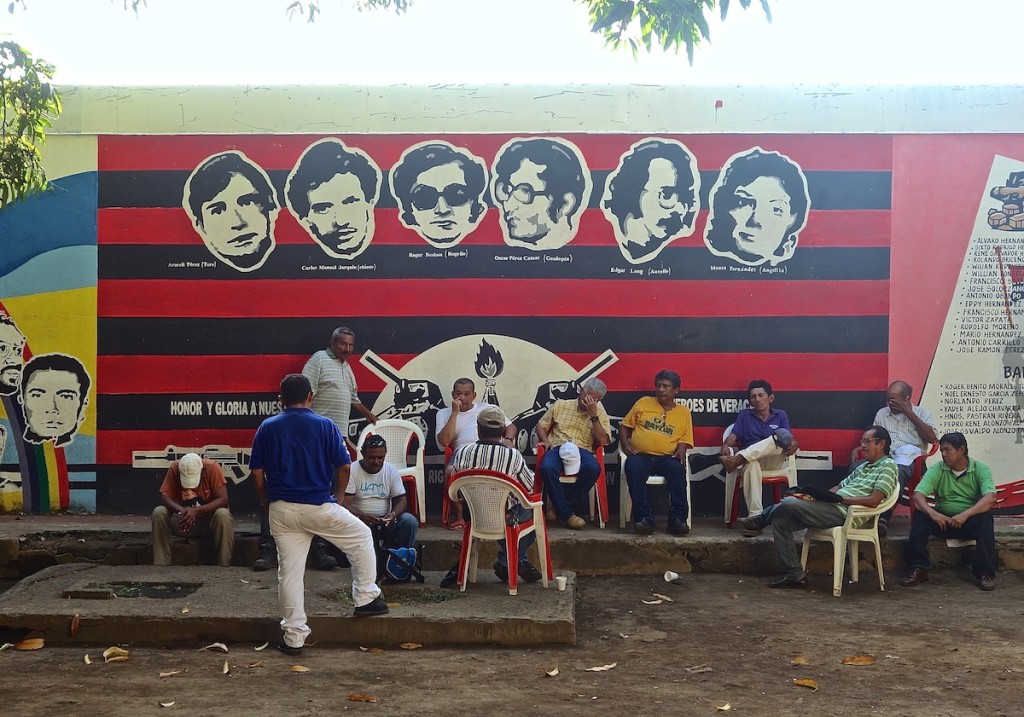
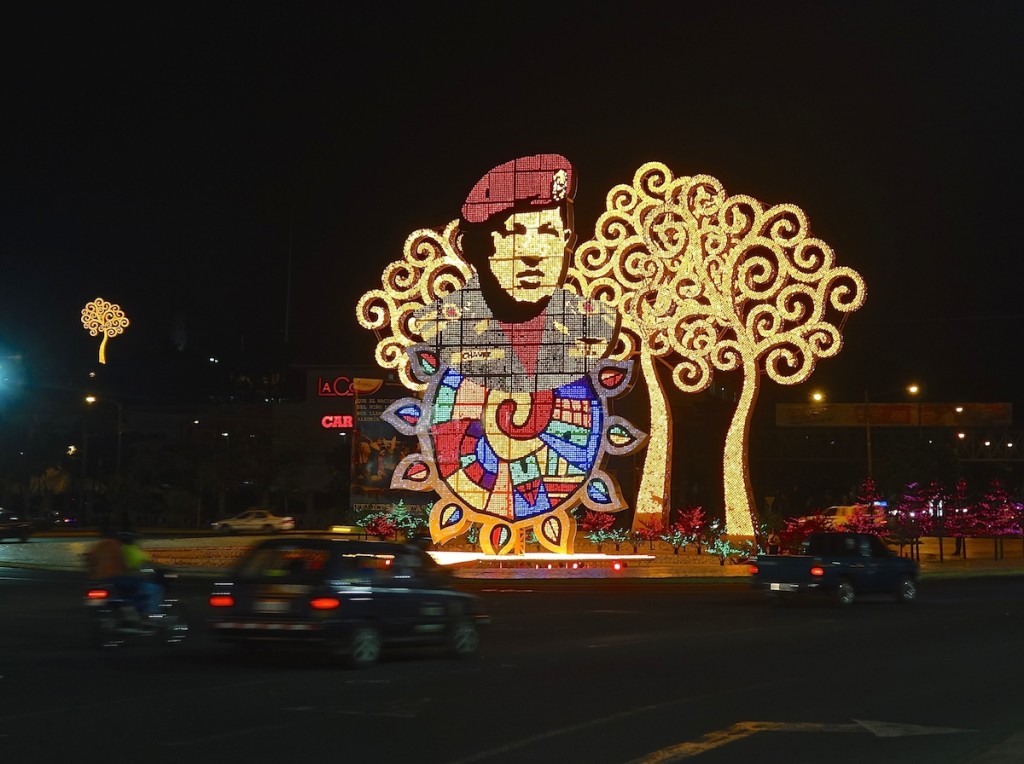
Comments
2 odpowiedzi na „Revolutionists, dictators, liberators, communists and murderersRewolucjoniści, dyktatorzy, wyzwoliciele, komuniści i mordercy”